
Best Earth Images of the Week March 1, 2013
Another amazing image
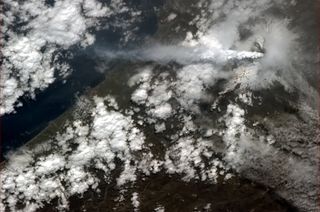
Astronaut Chris Hadfield, the planet's most popular space shutterbug, snapped a spectacular photo of Italy's Mount Etna volcano streaming ash toward the sea early this morning (Feb. 28).
The volcano erupted yesterday (Feb. 27), the latest in a series of strong paroxysms, or short, violent bursts. For the first time, explosions and ash spewed into the air from Mount Etna's Voragine crater, while webcams trained on the fiery summit showed activity at Bocca Nuova crater as well.
[Full Story: Astronaut Snaps Photo of Mount Etna Erupting]
Gold from the sky
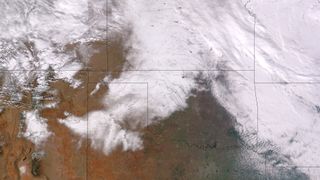
In the Texas Panhandle, black gold comes from oil wells and white gold falls as flakes from the sky.
The drought-strapped region was smothered with up to 18 inches (45 centimeters) of white gold Monday (Feb. 25) as a strong winter snowstorm blasted through from Colorado.
[Full Story: Texas' 'White Gold' Seen From Space]
Measuring the deep
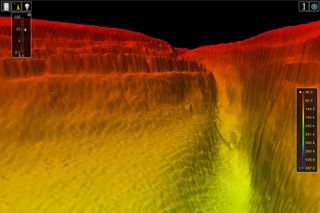
A canyon more than 800-foot-deep has been discovered on the floor of the Red Sea by the U.K. Royal Navy's HMS Enterprise, using an echo sounder that produce 3D images of the feature.
The survey ship was probing the topography of the bottom of the Red Sea as part of a mission to better understand the waters of the Red Sea west of Suez, Egypt, and their safety for shipping and navigation, according to a release from the U.K. Ministry of Defence (MoD).
[Full Story: Huge Canyon Discovered Beneath Red Sea]
Rare sight

As a waterspout sped toward Tampa, Fla., this morning (Feb. 26), a quick-thinking weather watcher snapped the vacation photo of a lifetime.
Robert Siegel, a spotter for the National Weather Service's volunteer program, was on vacation in Florida when the waterspout appeared in northern Hillsborough Bay at 11:12 a.m. Siegel, who lives in Colorado, shot photos and emailed them to the National Weather Service, which shared the waterspout image via Twitter.
[Full Story: Caught! Waterspout Comes Onshore in Tampa]
Low visibility

Driving snow and gusting winds reduce visibility to next to nothing in two wild videos taken in Amarillo, Tex., during today's historic blizzard.
The storm, which has dumped at least 17 inches (43 centimeters) of snow on Amarillo so far today (Feb. 25), has closed most roads in the Texas panhandle, including the major thoroughfares of Interstates 40 and 27. Around 11 a.m. CST, the Amarillo International Airport recorded a hurricane-force 75-mph gust of wind.
[Full Story: Intense Texas Blizzard Caught in Videos]
New life identified
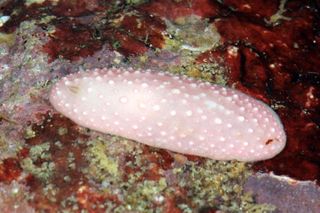
A vast array of new species was recently discovered in the world's most spectacular reef you've never heard of, Madang Lagoon in Papua New Guinea.
"It is the most diverse reef in the world," said marine biologist Jim Thomas, a researcher at Nova Southeastern University's National Coral Reef Institute in Hollywood, Fla.
[Full Story: New Pacific Species Include Shrimp in a Sponge]
Odd ice
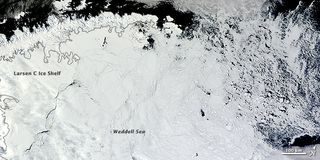
Strong winds make for strange sea ice patterns in the Southern Hemisphere.
In the Weddell Sea along the coast of Antarctica, the sea ice stretched 124 to 186 miles (200 to 300 kilometers) north of its typical extent in January and February, according to the National Snow and Ice Data Center (NSIDC).
[Full Story: Satellite Spies Unusual Antarctic Sea Ice]
Sign up for the Live Science daily newsletter now
Get the world’s most fascinating discoveries delivered straight to your inbox.
Far from home
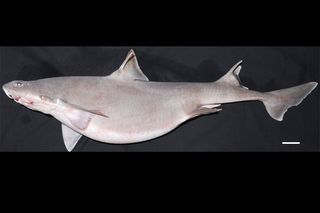
A rare shark couple found for the first time off the coast of Australia may force a rethink of the species' range.
Two years ago, a sport fisherman caught a pair of rare sharks off Rottnest Island in Western Australia. The duo, a male shark about 3.3 feet (1 meter) long and a pregnant female about 3.9 feet (1.2 m) long, looked different from the sharks that normally prowl the Australian waters. The female was carrying 22 pups.
[Full Story: Rare Sharks Unexpectedly Found in Australian Waters]
From out of this world
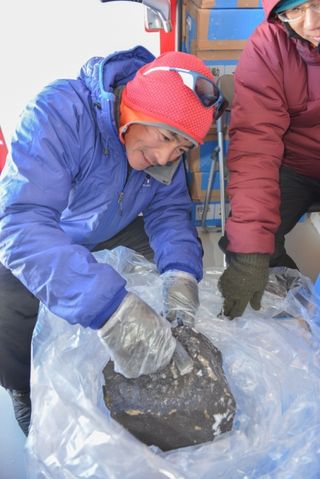
Meteorite hunters at the bottom of the world bagged a rare find this southern summer: a 40-pound (18 kilogram) chunk of extraterrestrial rock.
A team from Belgium and Japan discovered the hefty meteorite as the members drove across the East Antarctic plateau on snowmobiles. Initial tests show it is an ordinary chondrite, the most common type of meteorite found on Earth, Vinciane Debaille, a geologist from Université Libre de Bruxelles in Belgium, said in a statement.
[Full Story: Big Meteorite Discovered in Antarctica]










